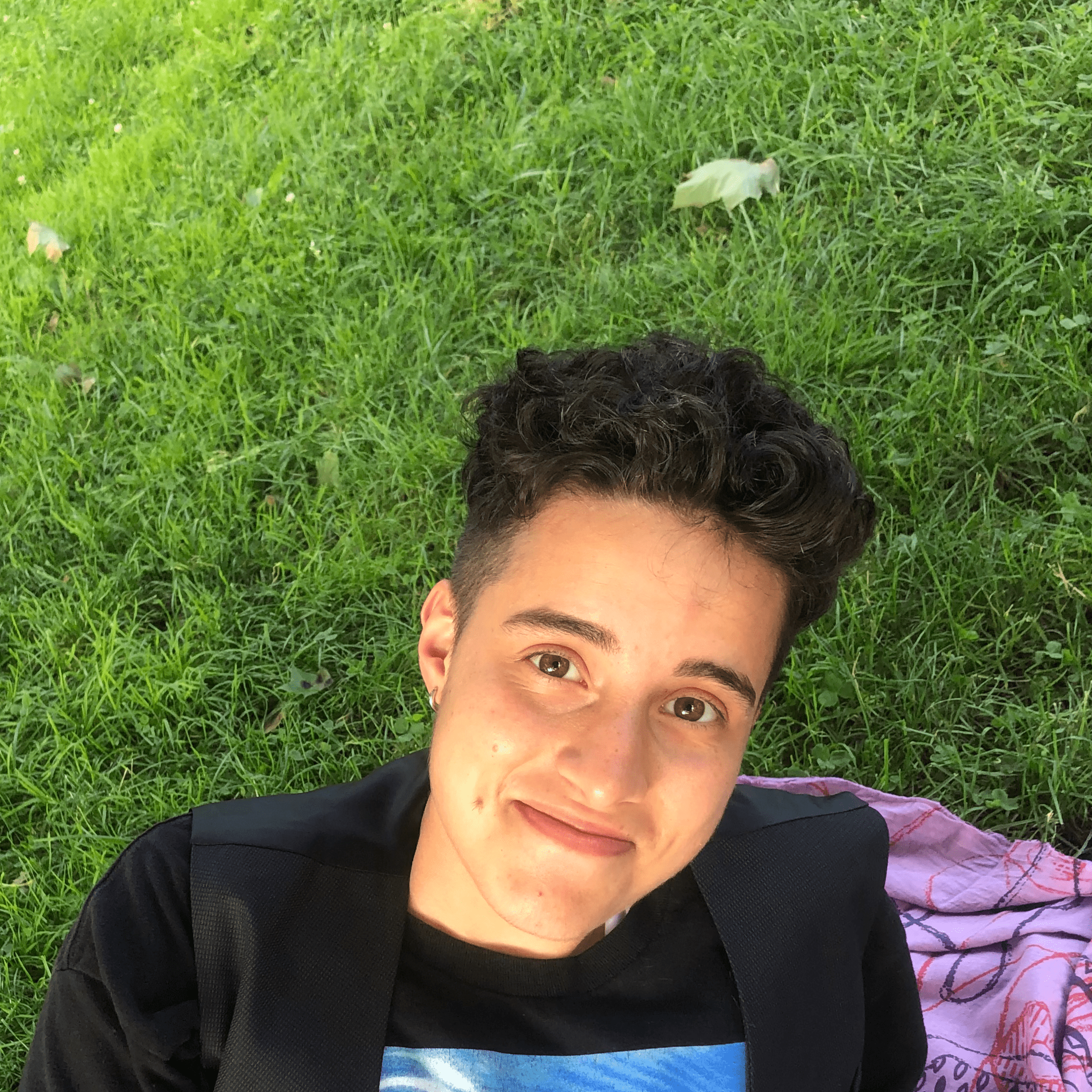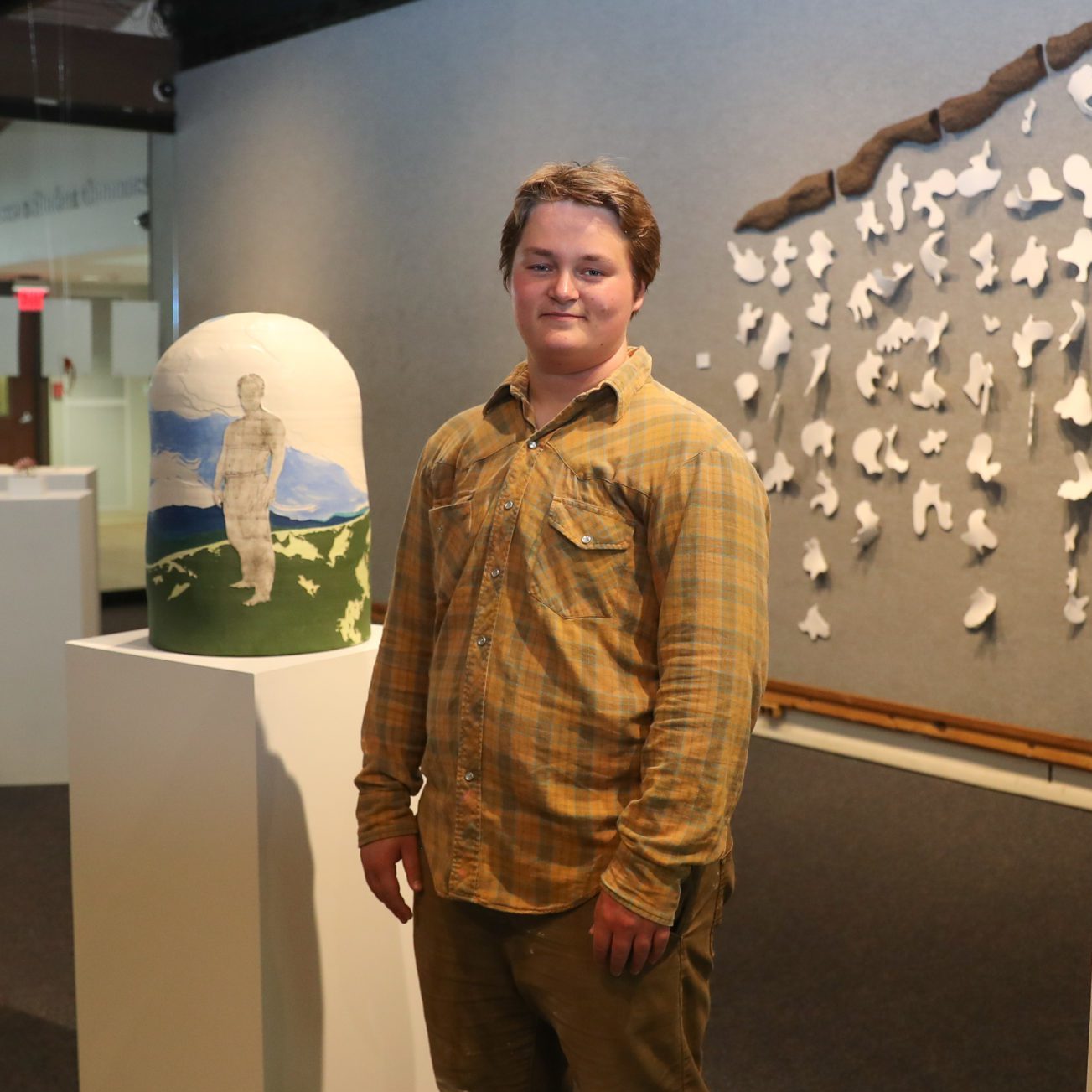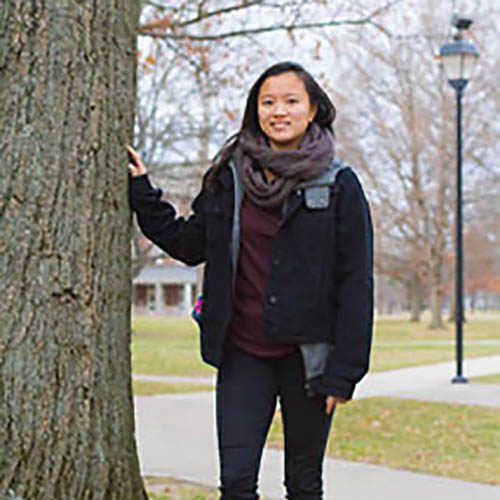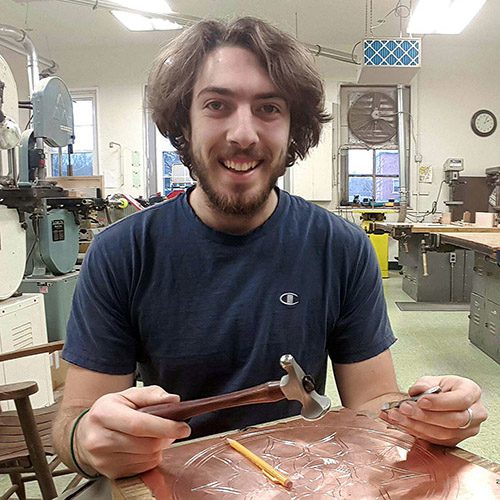Art
The art major at Earlham College is unique because it emphasizes both contemporary craft media, such as ceramics, metalsmithing and fiber art, and more traditional media, such as drawing, painting and photography, along with art history.
Earlham’s Center for the Visual and Performing Arts opened in 2014. This $22 million LEED-certified facility offers separate studio spaces for digital and analog photography, metals, ceramics, painting and drawing, fiber arts, and digital fabrication, each wired for multi-media presentation; plus an art history classroom.
Start your adventure
Sign up for more information about Earlham College.
Recent graduates have found jobs and fellowships at the Penland School of Crafts, Lionsgate, the Children’s Museum of Manhattan, galleries, libraries and more. Some are entrepreneurs and business owners. Others have gone on to pursue advanced degrees at institutions such as School of the Art Institute of Chicago, Indiana University Bloomington and more.
Artists with a historical context and a social mindset
Earlham’s art program provides you with a solid foundation in technique while also providing larger social and cultural contexts for your art. Through the program, you are able to shape your path by choosing art history, ceramics, fibers, metals, painting and drawing, or photography as a primary concentration. The major culminates in a senior capstone experience, a project planned in consultation with faculty that includes an exhibition at an on-campus gallery, the presentation of a research paper, the curation of an exhibition or the completion of a community arts project.
State-of-the-art studios
As an art major, you’ll choose to focus on either studio art or art history in your studies.
During your studio art classes, you’ll create in beautiful, state-of-the-art spaces dedicated to ceramics, digital art, metalwork, painting and drawing, photography, and fiber arts.
Practical career experience
All art majors complete an internship or apprenticeship experience, providing you with real-world career experience as an artist.
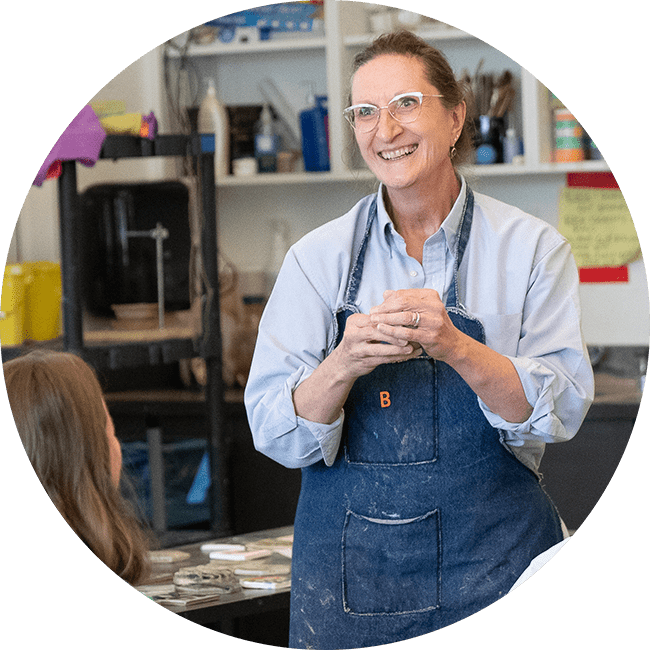
Our faculty
Our faculty include award-winning artists who lead off-campus study programs and explore topics like sustainable use of materials and the cultural and historical contexts of art forms.
Frequently asked questions
The art program at Earlham isn’t just for majors and minors; many students from other departments also take courses in art, lending an interdisciplinary perspective to the classroom.
View our gallery of student work to see recent senior projects.
There are a number of art-related programs at Earlham for interested students. Art majors and non-majors alike may consider:
Related applied minors
Related major/minor
Yes! The Rariden Scholarship is awarded annually to a student entering Earlham who is interested in pursuing an area within the visual and performing arts—art, music or theatre. Preference is given to a student from Wayne County, Indiana, although the selection committee will consider Indiana students from outside the county as well. The scholarship is $5,000 for each of a student’s four years at Earlham, totaling $20,000.
Earlham’s admissions counselors will screen applications from Wayne, Fayette, Randolph, Union and Franklin counties. The convener of the Visual and Performing Arts Division will send eligible applicants a letter and an information form in March. The form should be promptly returned to the Admissions Office.
Candidates will be contacted in April for interviews, and the winner will be notified by May 1.
In addition to this scholarship, Earlham offers additional talent-based scholarships for entering students. Be sure to include your interest and experience in art on your application of admission to be considered for these scholarships.
Art students have interned at museums, galleries and studios and apprenticed with artists all over the world.
Our faculty and the college’s career coaches can help you identify the types of internships and apprenticeships that are the best fit for your future career goals.
Yes, absolutely! In fact, art students are strongly encouraged to take advantage of both semester-long off-campus programs and funded research experiences.
Almost all Earlham students participate in off-campus learning opportunities – and these experiences may help fulfill the requirements of your major or minor. Earlham also offers semester-long internship programs in Philadelphia and Washington DC, which include many exciting opportunities in the arts.
Learn more about off-campus study and internship opportunities via the Earlham Center for Global and Career Engagement.
You find joy through art—whether it’s creating it or viewing it—and you want to hone your artistic talent and understanding. Maybe you want to use art to more thoroughly explore a topic that’s close to your heart. Whether you find yourself majoring or minoring in art, or just taking a course or two, this program can expand your methods of expression and provide you with the tools to make art a part of your life.
